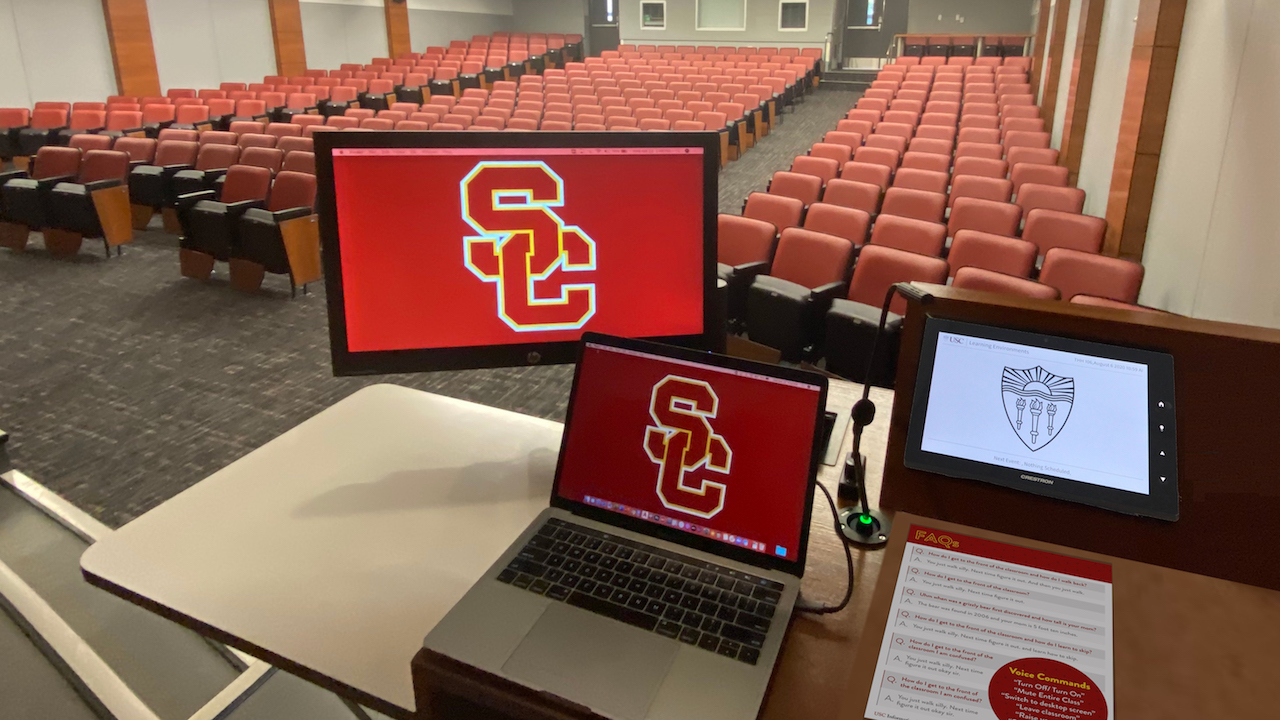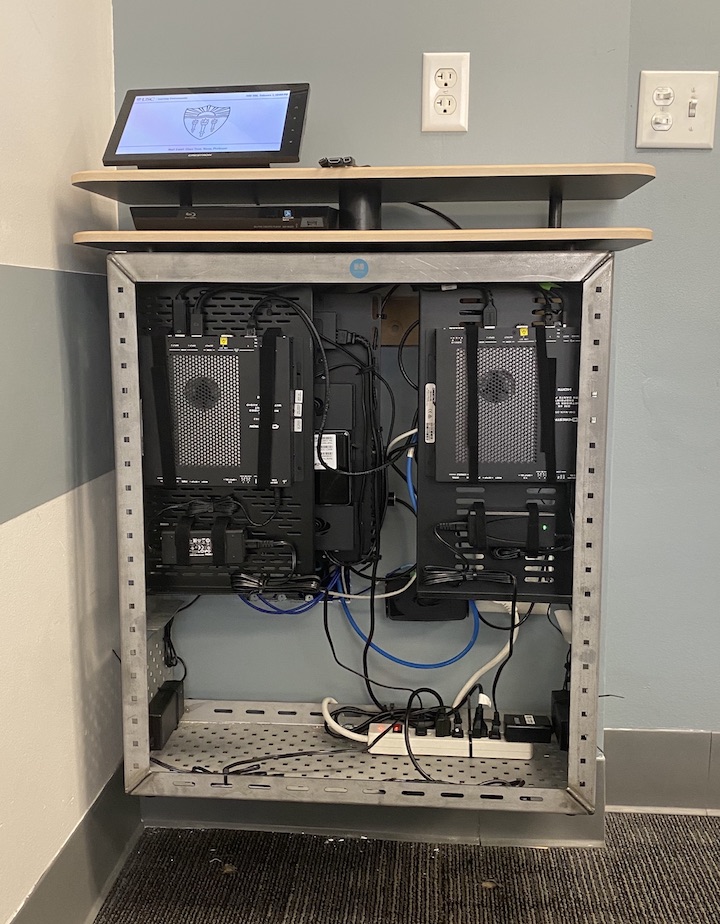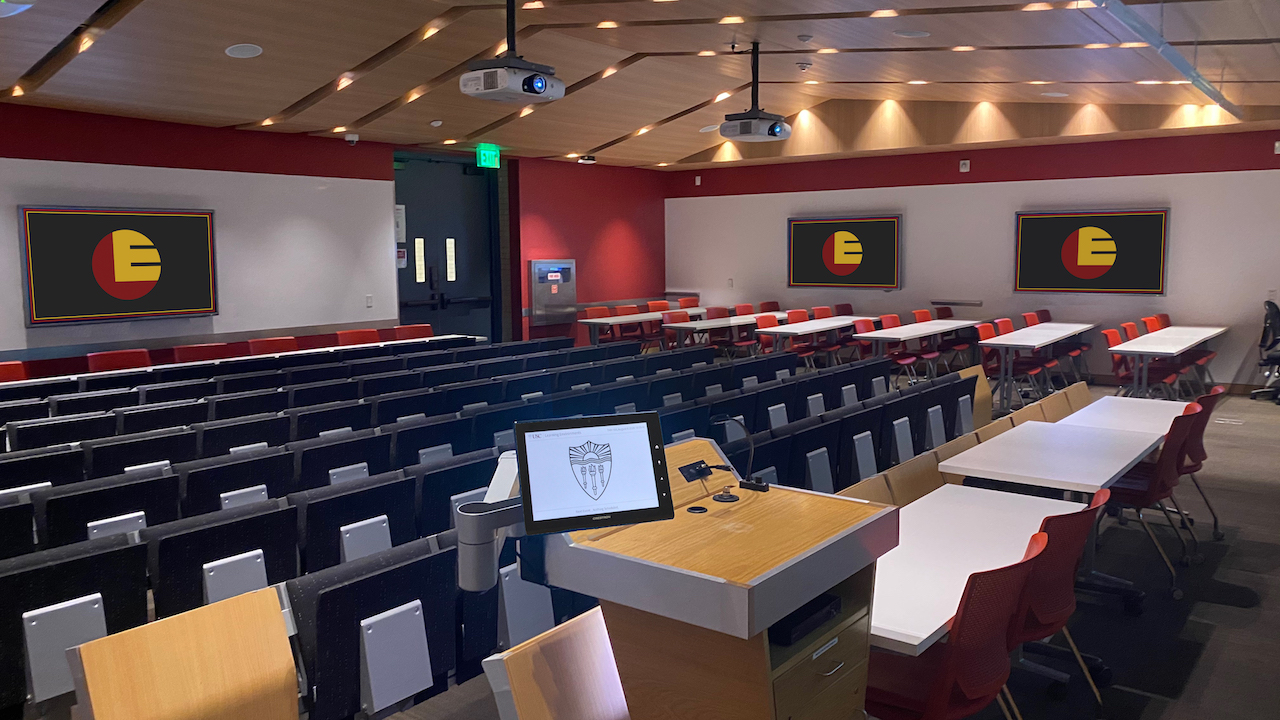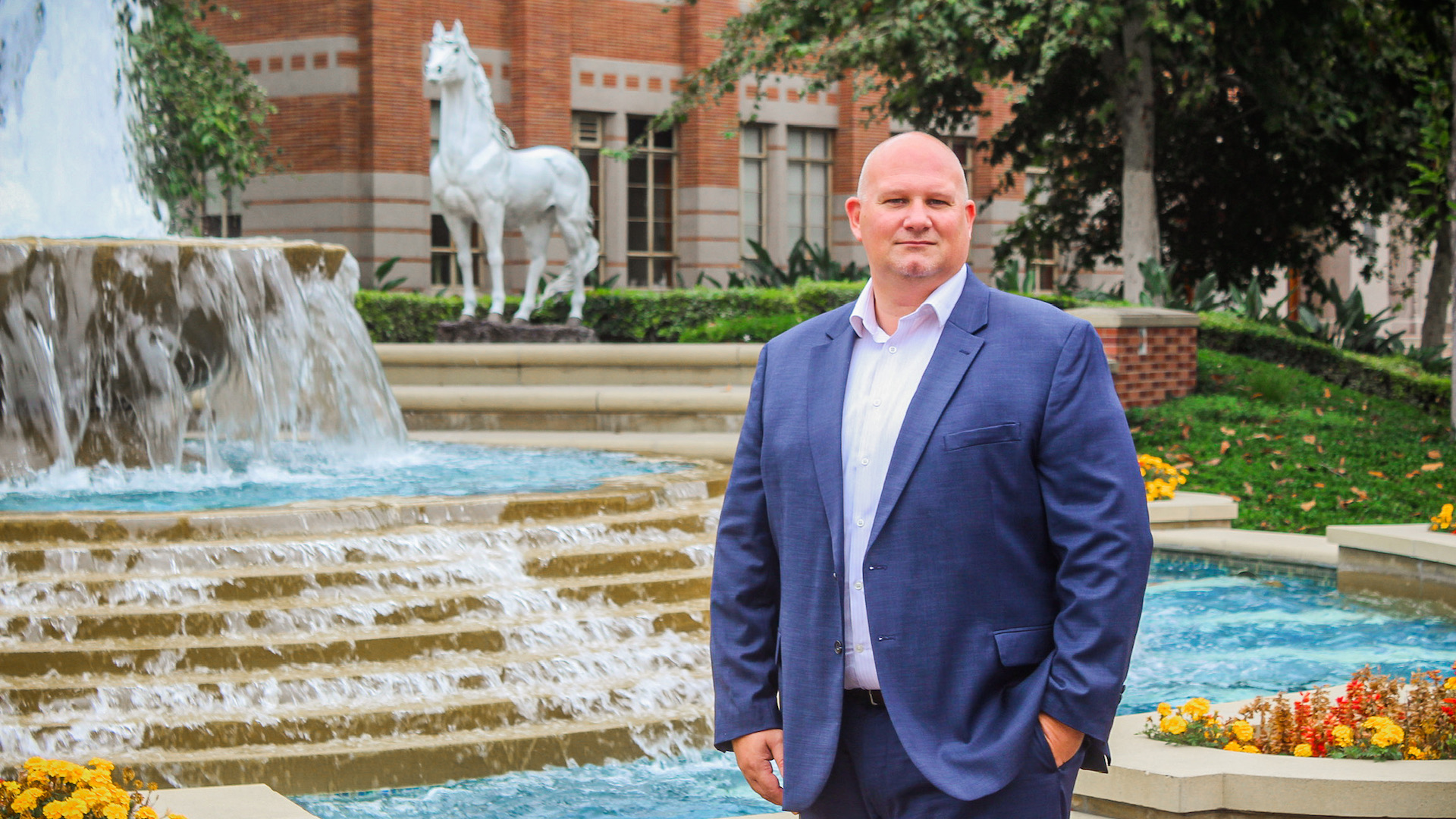As the COVID-19 pandemic swept through the country in March, many universities were sent scrambling to establish methods of transitioning their academic programs to the virtual realm. The University of Southern California was not one of them.
Thanks in part to the foresight of USC’s director of learning environments, Joe Way, the school had recently begun rolling out its next generation of educational technology on a foundation of cloud- and software-based systems, of which UC integration was a key component. Sometimes, forward thinking can solve unforeseen challenges.
Related: The Technology Manager's Guide to Distance Learning and Streaming
“I was thinking it would be good to have cloud-based collaboration, because then we could have experts out in the field videoconference into the class as a guest lecturer—someone who’s in the field in Africa, something like that,” Way said. “I didn’t realize it was going to answer the hybrid problem for the pandemic response, but I got lucky that way.”
A Holistic Background
Way is no stranger to looking at AV design—and life, in general—from many angles. Long before he took his current role at USC, he also studied there, earning a bachelor’s degree in philosophy. “What do you do with a philosophy degree? You go into the entertainment industry!” Way quipped. For more than 25 years, he worked in business development in the entertainment industry in Southern California, but felt drawn to higher education. Eventually, he shifted to a career doing in-house integration at California Baptist University.
Before moving into his current role, however, Way’s philosophical inquisitiveness led him to a PhD program in church production at the University of Birmingham in the U.K. “I had been a tech director of a few major houses of worship here in the L.A./Orange County area, and my PhD involved bringing it full circle,” he said. The curiosity he felt was the disconnect between artistry and technicality in both the AV integration and entertainment businesses—neither of them combined the two sufficiently. “My idea was how can you do both of those?” he said. “How can you ensure that the high-quality experience exists, which is what live production drives on, and then put that into standards and a level of expectation that commercial integration relies on? And that’s what I did for my PhD.”
A Return to the Beginning
Embarking on his new role at his old school with a fresh perspective, Way came to terms quickly with the challenge ahead. USC had just finished a complete reorganization of the entire IT department, and the first task given him by the CIO was to evaluate everything. “See where we are with fresh eyes, and don’t be afraid to blow it up,” he was told.

For three months, he audited everything, beginning with the state of the legacy technology, a “hodgepodge” of solutions that was a decade out of date. “Where I thought that I was going to turn in an ‘OK, we’re good, and here’s a five-year plan to stay along,’ actually, my response was ‘We need to blow it up and start over,’” he said.
He began with a roadmap: “We know that UC, AV over IP, cloud, and software-based technologies are the direction we’re moving in, so I wanted to be a leader in it,” he said. “And that’s how we came up with our design. Everything that I could do with software or IT-based technology, I wanted to focus on. Anything I could move to the cloud, I wanted to add in.”
Assembling the Team
Way knew he couldn’t introduce such a radical technology shift without also bringing in the right staff to support the implementation of his vision. So, as part of USC’s digital transformation, he sought out the best and brightest talent he could. “I created a list of all the qualities I would want out of the best team I could think of,” he said. “And that would not just be the best designers and AV techs and installers, but knowing we have to serve our customers, who has counseling experience? How about PR and marketing? And we also oversee digital signage, so what does our branding look like?” He also formed a customer experience department to stay on top of how the faculty trained on and used the technology. By the end of October, the new team had been onboarded and Way was able to move on to the technical execution of the new systems.
Building the System
The next step was an extensive testing process to find the right tech solutions. “I knew that I wanted to go with AV over IP, first and foremost,” Way said. He set up a test lab, and brought in a wide array of solutions to try out. “We set up everything you could think of, and we put it through the ringer,” he said. “We did that for about six weeks, looking at everything.” Ultimately, Way landed on Crestron’s NVX for the AV-over-IP backbone. “Even though I did select Crestron for the infrastructure, at my previous institution, I selected all Extron after doing the same thing,” Way said. “I’m not someone who’s like ‘This is the technology I have to have;’ I’m not brand stuck. I’m paid to make the best decision for the university, and whatever the current situation is, that’s what I’m going to go with.”
Also at the core of the new solution is Crestron’s Flex UC engine, Dante Domain Manager, BrightSign Cloud for digital signage, and Shure IntelliMix Room software DSP to manage all of the ceiling mics. “The more we could move into the software/IT world, we saw how pieces could work better together, because you’re having things talk off APIs rather than RS-232,” Way said.

To ensure the system would get the greatest adoption, Way made sure to consult design-centered faculty at each step in the process. “We asked people: ‘What do you like? What’s easy?’” he said. “So, it was more like, ‘Pick the way you like the feature, and then we’ll figure out the solution to deliver it to you.’”
This user focus extended to the design of the interfaces. “We had our users design our touchpanels, to simplify it,” he said. “I hate touchpanels that are overthinking, where there’s a button for everything. So we made it very simple; it’s a walkthrough in their language.” As an example of this, Way points to the on/off button: “Our interface doesn’t say ‘System On’ and ‘System Off.’ That’s AV talk,” he said. “It’s ‘Start Class’ and ‘End Class.’ That’s faculty talk. It’s amazing: that one change makes the faculty feel a lot more comfortable.”
The proof-of-concept phase concluded in December, the plan was finalized and funded in January, and phase one of the installation began immediately after. Then, a couple months later, the pandemic hit.
A Subtle Shift
With its Zoom-integrated, future-proofed game plan, Way said that not much of the first phase of installation was altered at all. “What the pandemic really did was move it all forward,” he said. “When we thought we were going to finish in August, we could finish in May because the campus cleared out.”
Phases two and three of the new systems rollout did, however, incorporate adaptations to the campus design to better suit new methods of instruction. “Phase two added some more spaces; we turned some traditional spaces into hybrid spaces, and we turned production rooms and auditoria into streaming rooms,” Way said. In addition, a lot of group huddle spaces were turned into streaming spaces with DTEN all-in-one Zoom conferencing systems. Phase three also created 50 production studios from which lectures and presentations can be streamed.
“The one thing that we discovered along the way is that the faculty’s real comfort zone is the classroom,” Way said. “So, even if students are going to be virtual, we can move a faculty member into their classroom and give them their whiteboard back, and put a confidence monitor there so they can see the students. If they can speak where they’ve spent their careers perfecting their craft, then that’s only going to be better for the students. If the faculty members are more effective, the learning is more effective.”
Overall, Way points to the strength of his team’s initial system design—and a little bit of luck—as the reason his rollout didn’t need much adjusting to handle the challenges that 2020 has dealt. “When people were rushing, saying ‘How are we going to do this?’ I could just put my hand up and say ‘Guess what? We already solved it; we already figured out how we can do this virtually,’” he said. “And we already figured out how we can do it in a hybrid sense. HyFlex [short for hybrid-flexible] is the buzzword now, but I had 200 rooms of HyFlex before the buzzword ever came out. Again, complete accident, but it solved the problem.”
Strong Teamwork
Another reason for the success of USC’s tech refresh is the tight-knit nature of the IT Services (ITS) department under which Way’s learning environments team falls. “You can’t avoid the rest of the IT department anymore like you could in the old days of AV,” he said. To stay on the same page, there is a weekly general directors’ meeting for all of IT to discuss issues and projects. When the tech refresh was in its second and third phases, there was a daily stand-up meeting with all of the infrastructure teams and the UC team, another key part of ITS.

“It’s a really good collaboration,” Way said. “I’m not going to say we don’t have disagreements; but it’s not that you butt heads as much as you just need to be educated in how you’re impacting other people,” a reference to the start of the process, when the IT team first came to terms with the sheer bandwidth that the AV systems would be eating up. “But once I educated them on the purpose of what we’re doing, and they could educate me on how this is impacting the network, you actually both grow through that experience. I’ve learned more about networking in the last four months than I have in my entire career.”
As an example, Way highlights the challenge of multicast containment. “I was used to multicast from Dante—knowing that you can send it everywhere and knowing that it subscribes—but you forget that as you do scalability, and you have so many more devices, especially NVX units that are sending 750Mbps consistently, that is a lot of bandwidth,” he said. “And if that can’t be contained within various leaves, you can take down a network.”
The Path Forward
After a professional career bouncing between paths of interest, it seems Way has truly found his niche as a university tech manager. Not only because he’s getting to apply creative solutions in a methodical way, but because the fruits of his labor are so tangible. “I always come back to the people,” he said. “The technology to me is the easy part—it’s the fun part because we get to play with all the shiny toys—but it’s the people that motivate me. That’s why I love higher ed, because you know that you’re doing it for a purpose. When you see the content that’s being provided, the connectivity—especially now with hybrid spaces—it’s much more than just turning on a projector so they can present something. You know that you’re actually impacting someone’s future, and that I like.”

